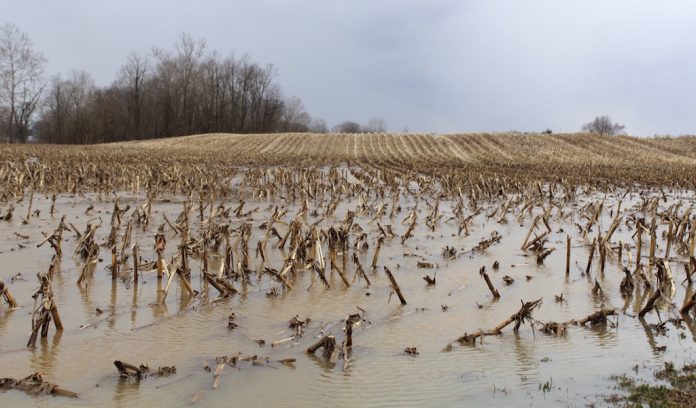When we think of the “weather market,” we usually think of weather problems that worry traders and push grain prices higher.
In the spring, we stew about delayed planting from too much rain, or cool weather that delays crop development. In summer, we worry about dry conditions and too much heat, the reason our traditional seasonal high for corn prices is in late June.
We don’t usually think about the other side of the weather market — the good weather market.
This year we have seen both, and they represent the good and the ugly. We slipped right through “bad” a few days ago.
Not that long ago, I said I had the concern that we were making an early high in the grain markets. Prices were pushed by rain-delayed planting and the idea that we might not get the crops planted.
December corn futures made a contract high of 4.29 1/2 on May 24. November soybean futures had made a 10.60 high April 2 after a 2 million acre planting surprise in the end of March USDA Planting Intentions Report. That was followed by highs of 10.57 3/4 high on April 30, 10.59 3/4 on May 24, and 10.60 1/2 on May 29, a new contract high.
Fickle futures
Planting progress in late May, coupled with ideal weather for those able to plant, reversed the markets with a vengeance.
December corn futures made a low Monday the 11th at 3.87 3/4. That was a loss of nearly 42 cents in 18 days.
November soybean futures made a low of 9.73 on Monday the 11th. That is nearly 88 cents off the high in just 13 days.
It is easy to say that planting progress was the reason for the big crop, but USDA’s Crop Condition Report is a bigger reason. Our crop condition ratings are the highest in years, and weather reports suggest that the crops continue to remain in great shape.
Crop update
Looking at the USDA numbers, we see that, this late in June, USDA does not report planting progress for corn, assuming it is done. As of Sunday night, the U.S. soybean crop is estimated to be 93 percent planted, a 6 percent gain for the week. We are actually well ahead of the 85 percent average.
Ohio is lagging slightly, at 90 percent planted versus a 91 percent average. We gained 9 percent of the planting in the last week.
The big market mover shows in the crop ratings. The U.S. is rated at 57 percent good and 19 percent excellent, for a 76 percent total. That is a slip of 2 percent in the last week, but 9 percent above the condition of last year.
Ohio is actually one of the top-rated states for corn condition, with 60 percent good and 27 percent excellent for a total of 87 percent. Only Minnesota at 90 percent and Wisconsin at 91 percent have higher ratings of the ten largest-producing states.
Ohio is actually ranked 10th in corn acres in recent years. We grow about 525,000 acres of corn, only 19 percent of Iowa acres. We represent 3.5 percent of the nation’s crop. Some days we have to remember that northeast Ohio is the third-largest area of the 10th largest state when it comes to corn production. The problems we have here do not move the needle on national production much.
U.S. soybeans are now rated at 74 percent good and excellent. That is a drop of 1 percent for the week, but is 8 percent better than last year. Ohio is rated at 80 percent good and excellent, only exceeded by Illinois, at 83 percent and Iowa at 88 percent, and Minnesota at 86 of the major states. Ratings in the eighties are basically unheard of normally.
Ohio is eighth in soybean production, with 2.5 million bushels versus leading state Illinois’ 6.12 million.
Still unplanted
Sadly, there are pockets where farmers have given up planting corn and are close to throwing in the towel on soybeans, all because they are still too wet.
Locally, an area near Cortland, Ohio, in Trumbull County is the wettest, but there are others. Parts of Kinsman and Jamestown, Pennsylvania, had five inches in one rain a week ago Friday. An area near Bellevue had three inches of rain Sunday night, and planting is stopped and maybe abandoned in that area.
A conversation with Ryan in our Ashland office Monday was all about how many acres in northeast Ohio were not ever going to be planted.











